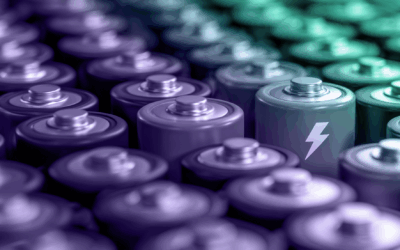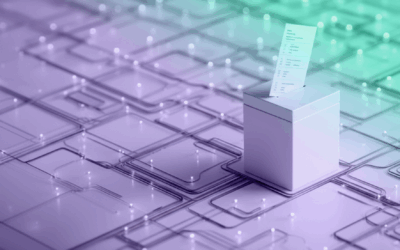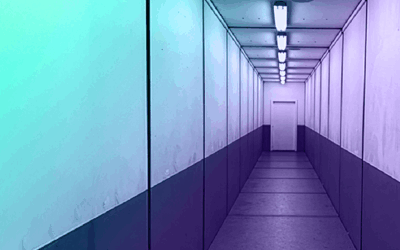May 3, 2024
The European Parliament’s adoption of a hydrogen and decarbonized gas market package— a framework to encourage growth in the nascent low-carbon hydrogen market— clears the path for legislation that defines low-carbon “blue” hydrogen in 12 months. The move encourages greater integration of hydrogen and biomethane into the gas grid and offers up to 100% grid access tariff discounts to network users, a positive for hydrogen producers.
- The European Parliament this April voted to adopt the hydrogen and decarbonized gas market package. After formal approval by the Council, the package enters force in June, following which a delegated act that defines low-carbon hydrogen is expected to be adopted in Q2 2025 — six months later than originally planned. This act will include a definition for low-carbon (blue) hydrogen, its production, import, and derivatives, and outline various sustainability and technical characteristics of the hydrogen value chain.
- The package encourages greater integration of hydrogen and biomethane into the natural gas grid and offers tariff discounts to network users, ranging from 75%-100% for renewable and low-carbon gases accessing the gas grid. Capstone believes this will help hydrogen producers like Linde Plc (LIN) and Air Liquide SA (AL). However, it could burden gas transmission system operators (TSOs) such as Open Grid Europe GmbH, GRTgaz, and others.
- The package also creates opportunities for expansion of the EU’s joint gas purchasing mechanism – AggregateEU – to hydrogen and stimulate growth in the market, as we had previously predicted.
EU Hydrogen and Decarbonised Gas Market Package
On 11th April 2024, Members of the European Parliament (MEPs) approved the revision of the Gas Directive 2009/73/EC and Gas Regulation (EC) No 715/2009, referred to as the hydrogen and decarbonised gas market package. The package aims to facilitate greater integration of renewable and low-carbon gases into the European gas grid, enabling the transition away from natural gas (methane).
Both texts will now have to be formally adopted by Council (currently awaiting Council’s 1st reading position), before entering into force – expected by June 2024.
Delegated Act for Low-Carbon Hydrogen
A secondary legislation known as a delegated act defining low-carbon hydrogen is expected around twelve months after the revised hydrogen and gas markets decarbonisation package enters into force. This represents a six-month delay versus the Commission’s original proposal, suggesting the delegated act could be adopted in Q2 2025. Understandably, proponents of blue hydrogen have been lobbying the Commission to adopt a delegated act sooner. However, in a recent letter to the Commission by the Renewable Hydrogen Coalition (RHC), signatories raised concerns against a hastily delivered delegated act that would fall short of the robust definition required for low-carbon hydrogen, and inadvertently increase future demand for natural gas.
The new low-carbon hydrogen delegated act will specify the methodology for assessing GHG emissions savings from low-carbon hydrogen and fuels. Low-carbon hydrogen is required to meet the 70% greenhouse gas emission reduction threshold compared to a fossil fuel comparator to ensure that it has the same decarbonisation impact as its renewable alternatives. We expect this threshold to become increasingly more stringent for hydrogen produced in installations starting operations from 1st January 2031. This adjustment aims to account for technological advancements in hydrogen production and promote a reduction in GHG emissions in line with the bloc’s targets. Operators will be required to use a mass balance system to show the threshold requirements have been complied with, and the obligations will apply to both imported and domestically produced low-carbon hydrogen.
The delegated act will stay consistent with existing methodology for assessing GHG savings from renewable transport fuels of non-biological origin and recycled carbon fuels. Such a lifecycle assessment will account for emissions from the production of low-carbon fuels over the entire supply chain, including emissions arising from the extraction of the primary energy, processing, and transport, and account for indirect emissions resulting from the diversion of rigid inputs, upstream methane emissions, and actual carbon capture rates.
Grid Integration of Green Gases
The updated legislation will also encourage greater integration of hydrogen and biomethane into the natural gas infrastructure by offering tariff discounts to network users. We believe this will help hydrogen producers such as Linde Plc (LIN), Air Liquide SA (AL), and others, but burden gas transmission system operators (TSOs) like Open Grid Europe GmbH, GRTgaz Deutschland GmbH, GRTgaz, among others.
In the current EU regulatory framework, gas (and electricity) networks are subject to regulated third-party access rules. The users of these networks pay for the development, maintenance, and operation of their respective grids. In the gas transmission network, users pay the TSO each time the gas enters or exits an entry-exit area.
Under the revised regulation, tariff discounts could apply to:
- Entry points from renewable gas and low-carbon gas production facilities and at intra-EU connection points. Network users shall obtain a discount of 100% for renewable gases and 75% for low-carbon gases in the Member States where the renewable gas or low-carbon gas was first injected into the system.
- Capacity-based transmission tariffs at entry points from and exit points to natural gas storage facilities. Network users shall obtain a discount of 100% for both renewable and low-carbon gases on the capacity-based tariff from the transmission system operator.
Derogations exist under certain conditions should a Member State decide not to apply the above discounts or apply a lower level of discount. Discounts will be reassessed by the European Commission after five years, in 2029.
The legislation also allows for the blending of hydrogen into the natural gas transmission system of up to 2% by volume (5% originally proposed by the Commission but reduced by the Council) from 1 October 2025 to ensure a harmonised quality of gas.
Joint Gas Purchasing
The legislation supports the expansion of the EU’s joint gas purchasing mechanism – AggregateEU – a positive development for the EU’s hydrogen market, as we had predicted.

Charlotte Bucchioni, EU Energy Analyst
Read more from Charlotte:
Waves at The Ballot Box: Why EU Electoral Dynamics will Have Underappreciated Implications Across Industry
Germany’s Softening Blue Hydrogen Stance a Positive for Producers
EU Energy Crisis Response: Why Renewables, Hydrogen, Recycling Will Play a Bigger Role
Read Charlotte’s bio here.



























